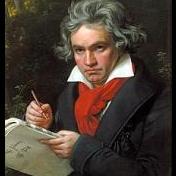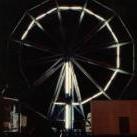Leaderboard
Popular Content
Showing content with the highest reputation on 12/25/2019 in all areas
-
This doesn't quite seem to be a fugue in the true sense. It seems more like a canon or ricercar. I'm not sure dissonance is the correct issue here -I can see a lot of issues with just the voice leading, doubling choices, and many unsupported parts. For instance, at measure 9, the winds and violin doubling the same line at ff is going to drown out the rest of the ensemble (which you have at mp and mf.) Your counter subject that begins at measure 5 also lacks enough variety to make it stand out in contrast to the subject itself. Generally, in fugues (and this also includes more modern examples), you want to state the counter subject in a different tonal region. I'd look at adjusting this. The canonic ending -where each voice drop offs leaving the cello- also doesn't quite work with this -particularly since you have the full ensemble play a closing chord. That said, I think the biggest issues here have more to do with lack of planning in terms of your material. One of the biggest lessons in fugal/contrapuntal writing is learning what works and what doesn't. Certain things are well documented: stretto, imitation, false entries, etc. These are classic tools for writing fugal material. I'm certainly not a tonalist and -hence- am not going to comment much on the harmonic nature of the work. Also, I'd do away with the ground bass pattern. One final caveat: I'm not sure who told you -ever- that you should write many pieces quickly to get the mistakes out of your system. If anyone ever instructs you to do this, ignore them. I was told once that there are no mistakes in music. Everything can be reworked. In many ways, this is true. We learn to identify and utilize tools that allow us to convey what we often times hear in our heads. The tools and problem solving are used to make this realization doable. If it takes you time to realize what you envision, then -by all means- take the time to make it a reality. Don't rush just because others thing its necessary.2 points
-
Winter is such a beautiful season. I composed a piece inspired by it for a trio. Not your typical trio though. Rather, I composed it for flute, violin, and piano. I think these instruments best fit winter, since the flute provides a mellow quality, the violin provides fullness, and the piano, well it sounds good with just about every existing instrument. My piece represents the joy that winter brings. I might later expand on this piece, but right now, it is a dance piece for a trio inspired by winter. I started thinking about this piece about a week ago when I saw snow falling. Because it represents the joy of winter, I decided to write it in E major, one of the most joyful major keys. There is a short C minor moment in there but very quickly a Picardy Third resolves the tension of the C minor into the relaxation of C major. There are a few passages for the flute that essentially amount to a measured cadenza(virtuosic like a cadenza, but with specific note values). When the key signature changes to 1 sharp, what proceeds essentially amounts to a development section primarily based on the B section(the section with the pizzicato). Right before it changes back to 4 sharps, I do a sudden modulation from C major to E major. The coda is short but provides finality to the piece that I don't think would have existed had I just straight up ended with the last measure of the A section. There are a few moments where only 1 or 2 instruments are playing, but for the most part, the whole trio is playing. What do you think of my winter piece?1 point
-
@Left Unexplained I don’t think orchestration is the problem here (if there’s even a problem in first place), but you should think about the textures you intend for the piece and how to achieve them. The way it is right now, you don’t seem to have much of a texture (which may be due to the midi sounds, as it would also depend on what you notate for the players and what the conductor asks from them), but you have what I previously called a “block” of sound. In that situation, texture becomes almost irrelevant as the ear will only be able to catch one “piece of information”. If you shake up the arrangement, the ear will perceive many different moving parts that come together into a more lively final-product. Perhaps you could listen to orchestral works by Debussy and Ravel and see what they did there. It will give you a good insight into what can be done. Also, don’t forget to listen to some 21 century influences, as there are very interesting stuff that can be learnt from those scores.1 point
-
This piece sounds like it could be a film score. It just has that feel to me. It is a pretty piece that you have composed there.1 point
-
This is probably one of the better compositions you've posted here. Congratulations on that! I think you were effectively able to work with a pedal and manage a decent balance between homophony, accompaniment, and counterpoint. There are a few things that strike me as odd, like m. 20's lack of a third, the drawn out, naked transition from mm. 58-64 (could have added a violin support, since by itself it sounds a little awkward), and the prominent 4th scale degree on the tonic at m. 56, but overall this is quite nice. I'd encourage you listen to some of the other Christmas Event pieces if you have a chance! It's nice that we're all giving back to each other. Have a great holiday!1 point
-
You say you want to avoid unwanted dissonances... but I'm assuming you don't necessarily want to follow Baroque fugue rules? Because if you did, the vast majority of this piece would need reworking, i.e. parallel fifths everywhere, parallel dissonances, incorrect chord resolutions. Operating on the assumption those rules don't matter to you, I'd still say that dissonance is the main issue here, since it obscures some of the chordal function of a lot of the piece. m. 14 is an example of that with a 7-8 bass suspension from B to C in the cello, but a motion to C on beat 4 before the syncopated resolution of the suspended tone. These sorts of little things exist in a few places (i.e. m. 20's G∆7 chord as a resolution to C). It's a well-thought out work, with an interesting take on the idea of fugue as a homophonic unit, but obscures the tonality a little bit too much.1 point
-
I also like them a lot. I feel like they are the strongest moments in the music. The midi sounds might be blurring my perception of it a bit, but I lack a bit more rhythmic inconsistencies quite a bit. I feel that the way you have it working right now weakens the apparenty very interesting elements in orchestration you have going, as it all becomes one "block" of sound due to not much diferentiation between the parts. If the parts were more diferentiated you could perhaps reduce the density of the orchestration in some parts, as the ear would have more to cling on to. This would make the music lighter to listen, which is probably a good thing, especially as this is a christmas thing. 1:43 reminds me of Ravel quite a bit, and I don't think there's better compliment than that. Very good job, I particularly like the harmonies in the beginning, especially when together with the flute part. Merry christmas to you, I look forward to listening more of your works in the year to come 🙂1 point
-
Composition completed on: Etude-Tableau №8 in F sharp minor ICO №94 - 09/09/2016 Etude-Tableau №9 in F major ICO №95 - 09/11/2016 You also can watch this piece here -1 point
-
I agree with this, I think! The abrupt changes in texture and tone are I think the most stand-out to me, since little transitional material is accumulated at the end of every return of the ritornello, it doesn't serve the purpose of priming the audience to listen for the fancy stretto/fugal stuff that's going on.1 point
-
The ritornello phrase is so strong that it seems to swallow the rest of the music. I'm not sure this form (rondó) goes well with this kind of language... I think the best parts (for me) are C1 and, particularly, C4 because of the richer texture. In fact, in section C2 the directionality is lost for that reason: a fixed texture, plus the repetition of the section. The pedaling in this section is strange, it follows the measures, not the chords. Overall I like this piece, although I would prefer not each section in a single pass, not repeated.1 point
-
1 point
-
It takes a lot of guts to put yourself out there with just guitar and voice, cuz there's no place to hide. But it's good. Just keep on going. 😊1 point
-
On listening again. I would practice your guitar fingering, lift you fingers slightly so you don't get all those squeaking sounds. Also you have a lovely voice, don't be afraid to sing out. Other finger picking patterns would spice up song nicely.. Either write a vocal melody for the long instrumental, or shorten it, and come back to voice again.. This song is a good foundation to put some more work into. Also you could consider saving it, write more, and come back to it, when you have more ideas to add to it. A fair amount of people write things, keep a good reference audio of it, and some kind of notes so you can re-create it. I sometimes get stuck on a song, and can't seem to compete it. I put it aside, and then one day, I find I have some new techniques to apply to it.1 point






